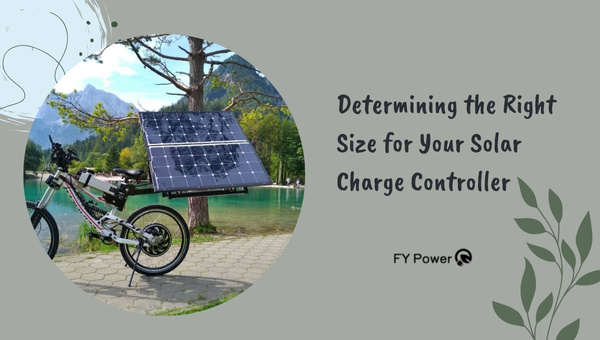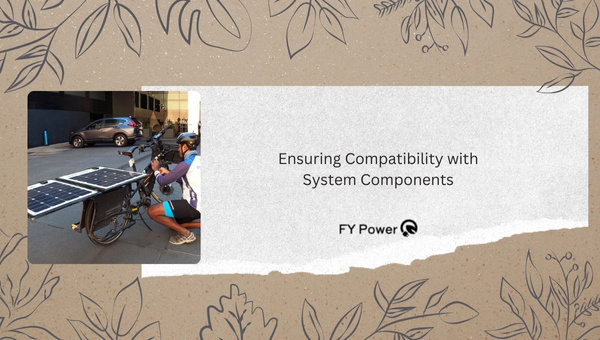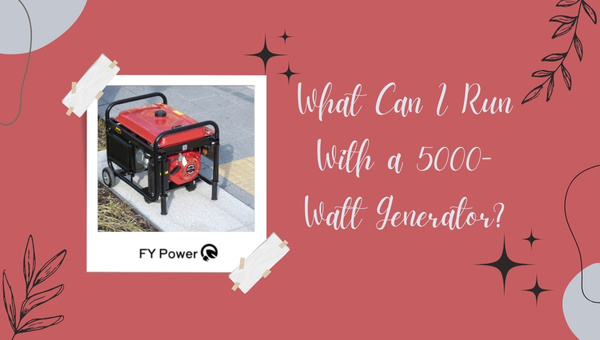Every ardent supporter of renewable energy knows that harnessing sunlight to power a home is an art in itself. However, the secret ingredient behind an efficient solar power system lies in mastering your savior – the Sizing Solar Charge Controller Perfectly! But how does one go about sizing a solar charge controller? Read on, my friend, as this guide will handhold you through it all.
Just like getting a well-fitted suit stitch requires your exact measurements, sizing the solar charge controller needs calculation and precision. It lays the groundwork for ensuring optimal system performance and maximizing your off-grid energy management efficiency. In short, right-sizing safeguards your entire solar set-up – battery bank, panels, and all connected devices.
What You’ll Discover Here:
- Insights into why accurate sizing of solar charge controllers is crucial.
- A comprehensive step-by-step guide to help you size your charge controller correctly.
- Compatibility check-points with other system components.
- Additional considerations beyond basic sizing for optimizing performance.
- Information on why factors such as temperature matter too.
Determining the Right Size for Your Solar Charge Controller
Determining the correct size for your solar charge controller is crucial to ensure the optimum performance of your solar power system. The size of the charge controller should match the capacity of the solar panels to regulate the charging process effectively.

Oversized or undersized charge controllers can lead to reduced efficiency and potential damage. It is essential to carefully evaluate the system’s voltage, current, and power requirements to select the right controller size for proper functioning.
Breaking Down the Basics of Sizing Solar Charge Controllers
Before we go deep into sizing a solar charge controller, let me explain what it is. A solar charge controller is a critical part in any solar power system. It’s like a manager; it controls how electricity from your solar panels charges the batteries. Why does size matter? Because if it’s too small, it won’t handle the energy well. And if it’s too big, you waste money buying more than you need.
Picture this: If you have a cup and try to fill it with water using a big bucket all at once, you will surely spill some water, right? That’s what happens if your charge controller is not right for your system; energy gets wasted.
The Importance of Accurate Sizing
Understanding the right size for a solar charge controller is very important. If it’s too small, the controller may get too hot. That’s because it has to deal with more power than it can handle. This overheating might not only break the controller but could also ruin your entire solar system.
To keep your solar energy system working well, picking the exact right size is key. Think about a boat with a crew: each member must do their work perfectly, or the boat could flip over. In the same way, every part of your solar setup must be correctly sized to work together without any problems.
Why is correct sizing essential?
- Avoids Overheating: A small controller can’t manage high power and may get too hot.
- Protects Your System: Preventing damage means everything lasts longer.
- Ensures Efficiency: The right-sized equipment makes sure your system runs at its best.
Always double-check that you have the right size for every piece of your solar energy setup!
Also Read: Solar Power Bank Wonders: Do They Actually Work?
Step-by-Step Guide to Sizing Solar Charge Controller
To properly size a solar charge controller, follow these steps: First, calculate the total solar panel wattage and the system voltage. Next, determine the maximum charging current requirement by dividing the total solar panel wattage by the system voltage.
Then, select a charge controller with a maximum charging current rating that matches or exceeds the calculated requirement. Finally, consider factors like system expansion and future load increase to ensure the charge controller can handle the potential growth.
Step 1: Calculate Solar Array Wattage
Now let’s start figuring out which solar charge controller size fits best:
First, write down how much power each of your solar panels makes (that’s their wattage). Say one panel makes 100 watts and you have ten panels; that would be 100 watts times ten – simple math leads us to 1000 watts total!
Next, consider what kind of battery bank you’re using – are these 12-volt batteries or maybe 24 volts? This tells us how much voltage our system deals with.
Last thing here – remember that cables between things can affect how much energy gets through since some may be lost as heat due to resistance (that’s why thicker cables are sometimes better). Make sure this is considered in your calculations as well.
Step 2: Account for Voltage Variations
It is moving on! Did you know temperature can change how electricity behaves in circuits? Yep, it does. In cold weather, the voltage goes up… but when it’s hot outside, it goes down.
For safe operation and to ensure we don’t push components past their limits:
- Look at the highest voltage (max PV voltage) on spec sheets for both panels and controllers.
- Add some breathing room by putting aside an extra bit above what we calculate as our needs during peak operation conditions – this means considering those temperature changes day-wise across seasons.
Doing so will give us peace of mind that nothing goes wrong due to weather changes!
Step 3: Determining Charging Current for MPPT and PWM Controllers
Finally, let’s talk about different types of controllers:
- MPPT (Maximum Power Point Tracking) – these guys are smart! They adjust things smoothly to get maximum performance from those sunny days by matching voltages.
- PWM (Pulse Width Modulation) – simpler buddies who step down higher voltages from the panel so they fit with battery levels while keeping the current steady thanks to their turning on and off rhythmically.
The current needs for each type aren’t exactly alike:
- For MPPTs – Divide total power (from step one) by battery bank voltage.
- For PWMs – Use short-circuit current ratings from panel specs since they directly relate here.
Knowing these specifics ensures we pair up just the right one with our personal setup without fuss or fuss!
Always aim for effective management within an off-grid energy system; understanding these minutiae immensely helps in having an eco-friendly yet robust configuration! And there we go! Follow these steps carefully when sizing folks’ favorite sun-powered colleague—the mighty Solar Charge Controller.
Also Read: Find Out The Power Consumption Of Household Appliances
Ensuring Compatibility with System Components
Ensuring compatibility with system components is crucial for efficient functioning. It involves evaluating hardware, software, and network requirements to ensure smooth integration and optimal performance.

Consideration of factors such as processing power, memory capacity, operating system compatibility, and communication standards is essential. This ensures that all components seamlessly work together, minimizing compatibility issues and maximizing overall system efficiency.
Checking Compatibility with Battery Bank Specifications
Picking a solar charge controller is like finding a dance partner for your batteries; they must move together well. Here’s how to make sure they’re a good match:
- Check the Voltage: Start by looking at your battery bank’s voltage. The charge controller must work with this voltage.
- Examine Capacity: Your battery bank has a certain capacity, measured in amp-hours (Ah). Ensure the controller can handle this capacity without any issues.
- Understand the Type: Different batteries – like lead-acid or lithium – may need different controllers. Pick one that suits your battery type.
- Find Flexibility: Some systems have special needs. If yours is one of them, grab a controller that lets you set custom charging profiles.
This is really important because if things don’t match up, it can hurt your batteries or even mess up your whole power system.
Aligning With Solar Array Parameters
Now let me walk you through making sure the solar charge controller fits snugly with your panels:
- What’s Its Max?: Look at the highest amount of voltage and power (watts) that can come from your solar panels. Your controller should say “I got this” and take it without breaking a sweat.
- Voltage Details Matter: If it’s too much juice (too high of a voltage), it’s trouble. Ensure the max open circuit voltage (Voc) of the panels is within what the controller can handle.
If these two don’t see eye to eye, efficiency drops and gear might get damaged – you don’t want that.
Also Read: Which generator is required to run a refrigerator?
What Else Should Be Considered When Selecting A Charge Controller?
When selecting a charge controller, it is crucial to consider factors such as the maximum current and voltage ratings, the type of battery being used, the charge control algorithm, the type of solar panel, and the overall system size.
Additionally, factors like temperature compensation, efficiency, and monitoring capabilities should also be taken into account to ensure optimal performance and protection of the battery.
Eyeing Additional Features & Capabilities
Sometimes sizing isn’t everything. Think about these extras that could spice up your solar setup:
- Bluetooth Makes Life Easier: Imagine changing the settings on your charge controller from your phone. Bluetooth makes it possible.
- Load Terminals for Control Freaks: Want more control? Some controllers have terminals to manage other gear directly.
- Seeing Is Believing: A screen on the unit keeps you informed about what’s happening right there, in real-time.
Fancy features mean more comfort in managing energy under sunny skies or starry nights.
Accounting For Temperature Factors
Heat and cold play big roles just like in cooking; here’s why:
- Not Too Hot or Cold Please!: Batteries and controllers act differently when it’s hot or cold; think like humans when the weather changes their mood.
- Factoring In Fluctuations: Since these moods affect how much energy gets pumped in or stored, adjust settings based on temperature readings.
Keeping an eye on temperature keeps your system happy year-round.
Wire Sizing Matters Too!
It’s all about connections—like choosing friends wisely affects life; selecting wires affects efficiency. Here’s what I mean:
- Bigger Isn’t Always Better: Thick wires carry more power but also cost more—find that sweet spot for efficiency without emptying pockets.
- Code Talk: In some places, laws tell you what wire size to use for safety reasons—know those rules so no one gets mad at you!
Wire wisely; my friend—it literally holds things together while saving money and keeping fires away!
Proper wire sizing isn’t just policy – it ensures harmony in carrying precious watts where needed safely!
FAQs
How can I ensure my solar array wattage is properly calculated for the accurate sizing of my solar charge controller?
To make sure you get the right numbers, add up the wattage of each solar panel in your system and multiply by the number of panels. Be precise and include everything to avoid mistakes.
Is it necessary to adjust the maximum PV voltage of a solar charge controller based on temperature variations?
Yes, temperature can affect voltage. It’s smart to look at your area’s highest and lowest temperatures when figuring out your max PV voltage to keep things safe.
If my battery bank upgrades in the future, will I need to resize my solar charge controller?
Maybe. If your new batteries have a different voltage or capacity, you might also need a new charge controller that fits well with these changes.
Conclusion
Sizing your solar charge controller correctly is a step you can’t overlook if you’re setting up a solar power system. It’s the heart of energy management, ensuring that your batteries are charged efficiently without any risk of damage. Through careful calculation and consideration of the factors I’ve discussed, such as panel wattage, voltage variations, and controller type (MPPT or PWM), you’ll be on the path to optimizing your off-grid power needs.
By paying attention to compatibility with both battery banks and solar array parameters, as well as considering additional features and the impact of temperature and wiring, your system will not only run smoothly but also last longer. Just remember: little details make a big difference when it comes to harnessing the sun’s power effectively.

